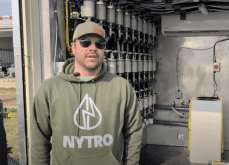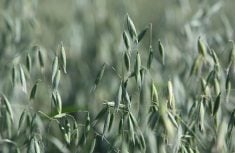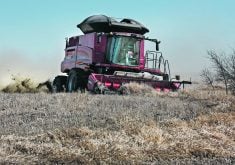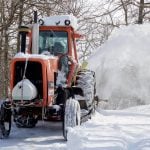Pros and cons of fall fertilization
Results from fall fertilization can range from excellent to disastrous, says Alberta Agriculture’s supervisor of crop nutrition.
“Effectiveness depends on soil moisture conditions, environmental conditions, type of nitrogen fertilizer used and the method of application,” said Ross McKenzie.
McKenzie said there are a number of factors to consider when deciding if fall fertilizing is the best option.
There are general rules for application methods and timing. Generally, spring banding is the most effective application method and fall broadcast is the least. Fall-banded nitrogen application is as effective as spring banding, if soil isn’t saturated for an extended period in the spring. And, fall-banded nitrogen may be more effective than spring banded when there are poor seedbed moisture conditions.
Read Also

VIDEO: Ag in Motion documentary launches second season
The second season of the the Western Producer’s documentary series about Ag in Motion launched Oct. 8.
Soil tests, to at least a 58-cm (two-foot) depth, are recommended before fall fertilizing. This will help determine optimum rates of required fertilizer.
Apply conservatively
If there are no soil test results before you fertilize, apply a conservative rate. This rate, approximately 75 percent of the soil test recommendation, is a hedge against such things as high soil nitrogen levels or low soil moisture levels in spring. If conditions are good next spring, additional nitrogen can be added during seeding.
Third, McKenzie recommends selecting the right fertilizer formulation for the conditions. In low risk conditions, such as in southern Alberta, anhydrous ammonia (82-O-O), urea (46-O-0), ammonium nitrate (34-0-0) or liquid nitrogen (28-O-0) perform equally well when banded.
However, higher pH soils, shallow bands and dry, cloddy soil can cause nitrogen losses through ammonia volatilization.
“If your soils tend to be saturated for a long time in the spring, avoid using nitrate fertilizers such as ammonia nitrate and liquid nitrogen,” recommends McKenzie. “Nitrates are subject to both denitrification – gaseous losses – and leaching losses in wet spring conditions.”
Nitrogen fertilizer should be applied in the late fall – after soil temperature drops below 7¡C – for best results. The conversion of ammonium to nitrites by soil micro-organisms slows down as temperature drops.
Method is also critical and McKenzie sums it up in three words: “Band, don’t broadcast.” Banding restricts the contact between soil and fertilizer. This reduces overwinter losses.
McKenzie says there are at least three other management factors farmers need to think about. First, there’s time management. Fall fertilizing means one less operation next spring. Second, price can be a factor. Often fertilizer prices and payment schedules tend to be more favorable in fall than in spring.
Finally, both fertilizer and fertilizer equipment are usually more available in the fall.
– Alberta Agriculture














